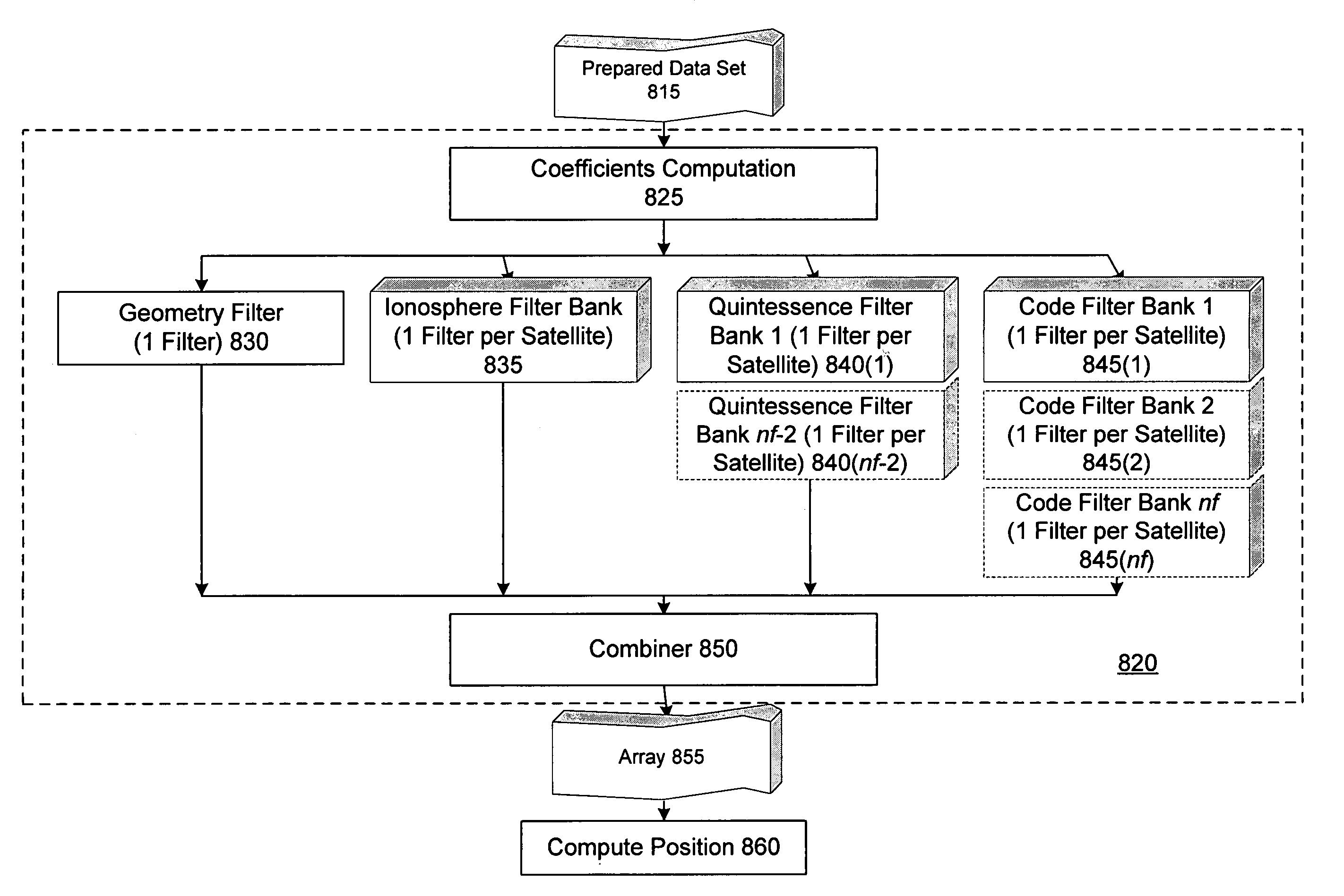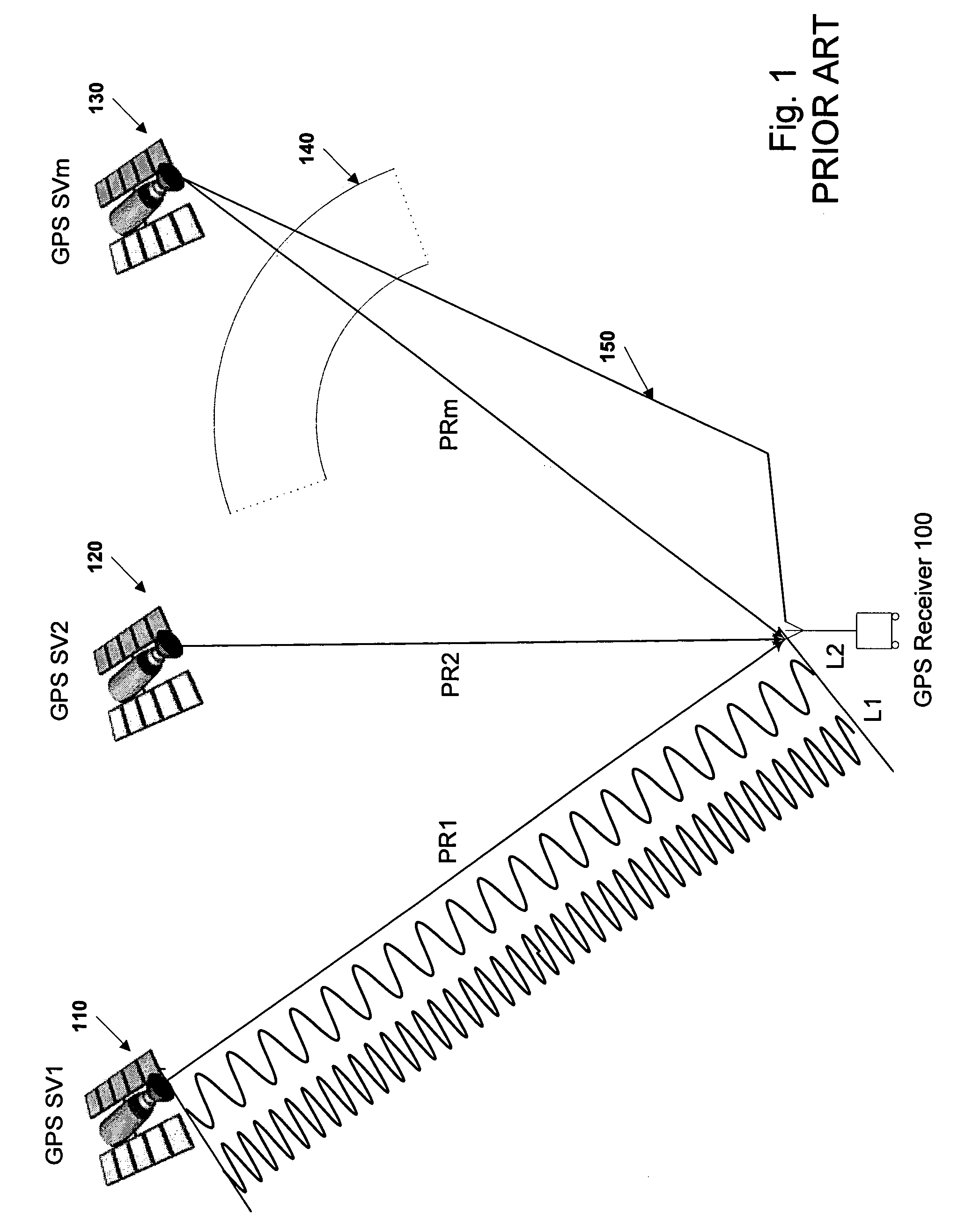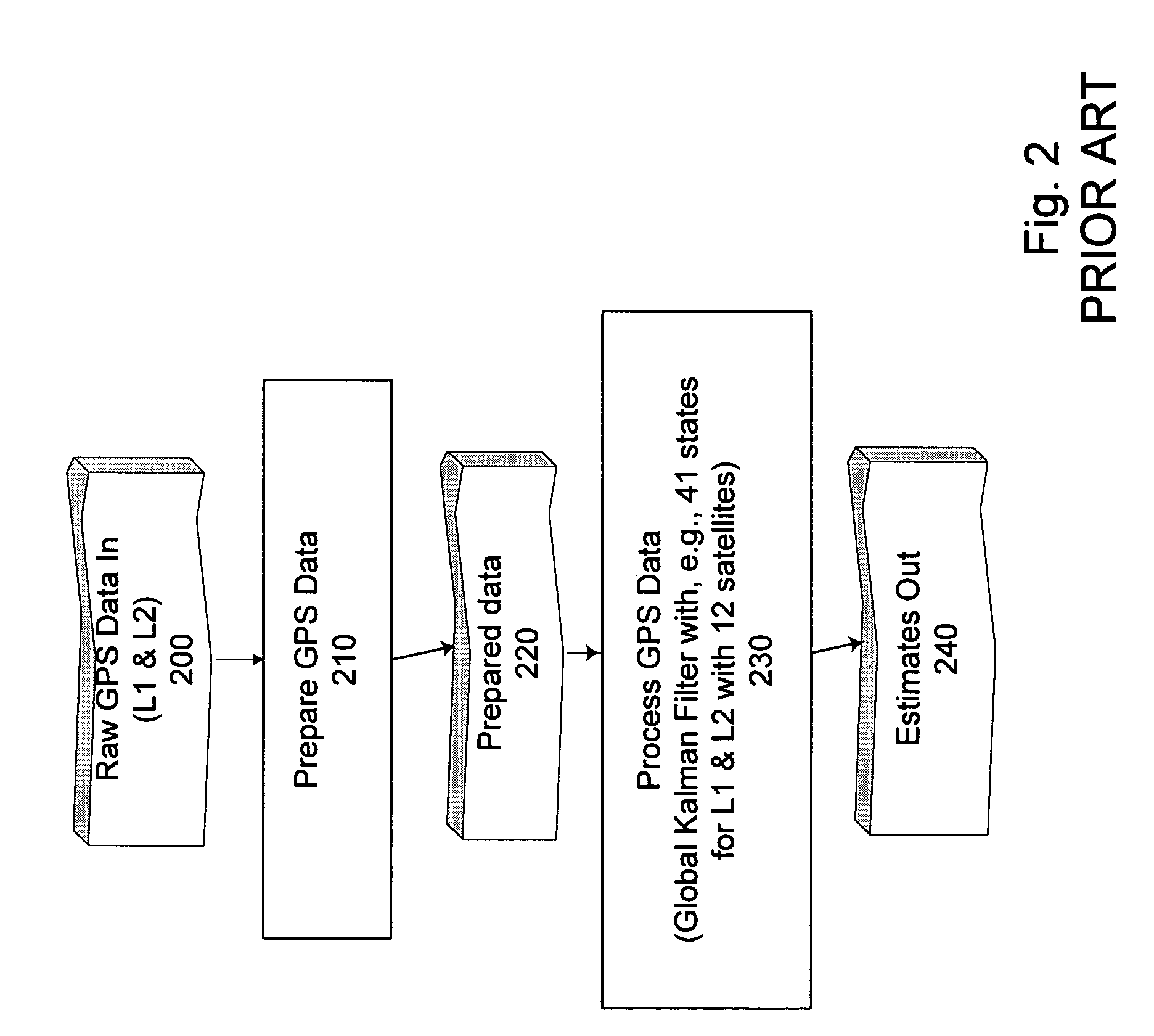Ambiguity estimation of GNSS signals for three or more carriers
a technology of ambiguity estimation and gnss signals, applied in satellite radio beaconing, measurement devices, instruments, etc., can solve the problems of important cost, weight and run-time factors, and achieve the effects of reducing the effort required for statistical search, high computational efficiency, and reduced validation
- Summary
- Abstract
- Description
- Claims
- Application Information
AI Technical Summary
Benefits of technology
Problems solved by technology
Method used
Image
Examples
coefficient example
[0234]The following example specifies the coefficients for the four-carrier case.
Minimum-Error Geometric Carrier-Phase Combination
[0235]The minimum-error carrier-phase combination is used in the geometric float-solution filter. The carrier-phase combination used there is defined as:
[0236]φgeo=a→geoT·(ϕ1ϕ2ϕ3ϕ4)=(ageo,1ageo,2ageo,3ageo,4)T·(ϕ1ϕ2ϕ3ϕ4)(0.71)
[0237]With the following notations:
[0238]B⇀geo=-λ1·(1λ21λ31λ4)(0.72)Qgeo=(σϕ22000σϕ32000σϕ42)(0.73)R⇀geo=1λ1·B⇀geo+(λ2λ12λ3λ12λ4λ12)(0.74)
in which the coefficients are defined by:
[0239](ageo,2ageo,3ageo,4)=-(σϕ12·B⇀geo·B⇀geoT+Qgeo+σio2·R⇀geo·R⇀geoT)-1·(σϕ12·λ1·B⇀geo+σio2·R⇀geo)(0.75)ageo,1=λ1+B⇀geoT·(ageo,2ageo,3ageo,4)(0.76)
Minimum-Error Ionospheric Carrier-Phase Combination
[0240]The minimum-error ionospheric carrier-phase combination is used in the ionosphere filters. The combination is defined as:
[0241]φiono=a⇀ionoT·(ϕ1ϕ2ϕ3ϕ4)=(aiono,1aiono,2aiono,3aiono,4)T·(ϕ1ϕ2ϕ3ϕ4)(0.77)
[0242]With the following notations:
[0243]A⇀iono=(1λ11λ2...
PUM
 Login to View More
Login to View More Abstract
Description
Claims
Application Information
 Login to View More
Login to View More - R&D
- Intellectual Property
- Life Sciences
- Materials
- Tech Scout
- Unparalleled Data Quality
- Higher Quality Content
- 60% Fewer Hallucinations
Browse by: Latest US Patents, China's latest patents, Technical Efficacy Thesaurus, Application Domain, Technology Topic, Popular Technical Reports.
© 2025 PatSnap. All rights reserved.Legal|Privacy policy|Modern Slavery Act Transparency Statement|Sitemap|About US| Contact US: help@patsnap.com



